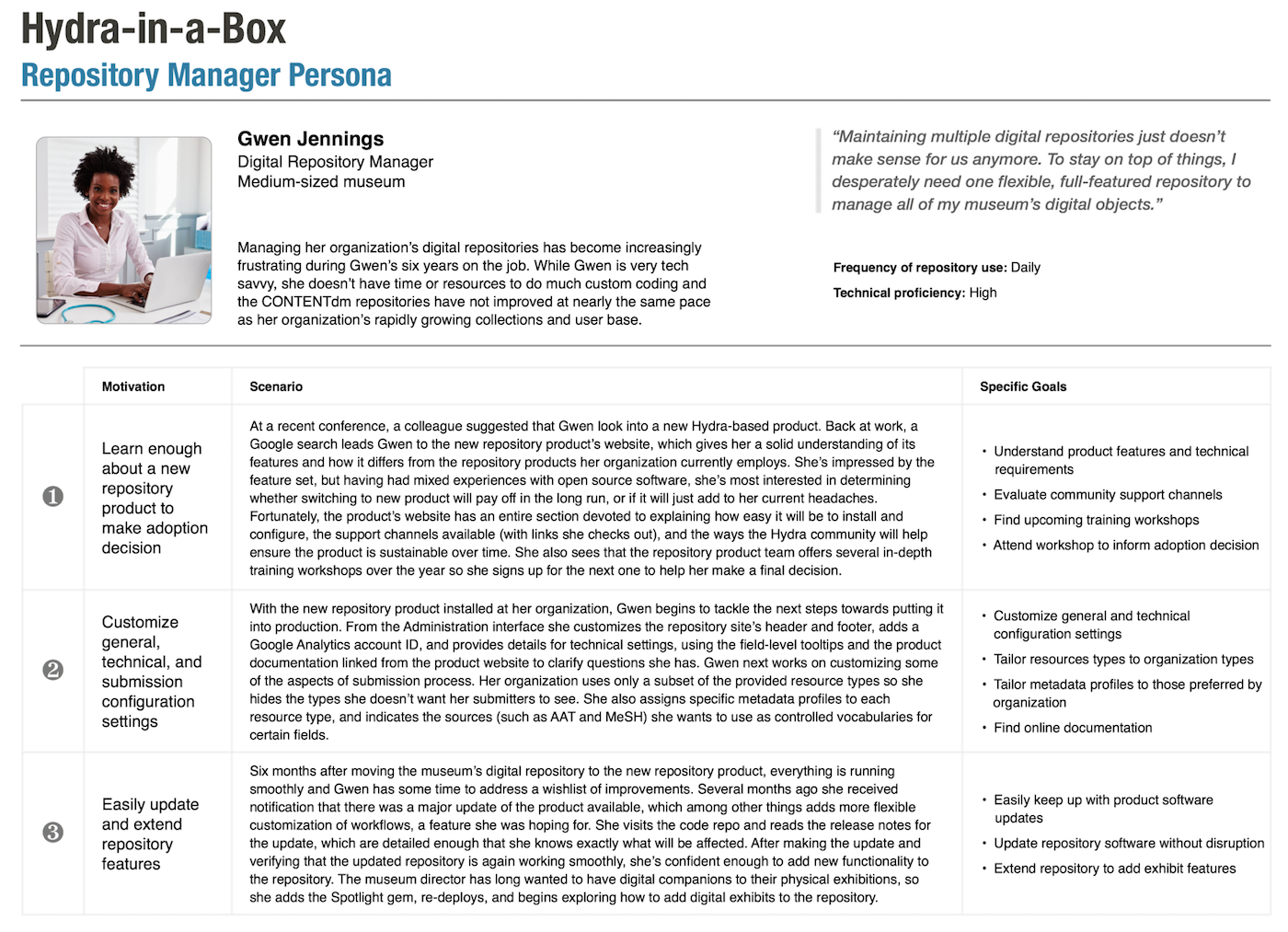Third in a series of blog posts highlighting the personas produced in our design process, each representing a typical user of Hydra-in-a-Box and embodying a number of use cases that our repository product, now in development, or the hosted service, now in planning, aim to fulfill.
This week information professionals working in the cultural heritage community are converging on New Orleans for MCN 2016. With that as a backdrop, we present another persona, Gwen Jennings, Digital Repository Manager at a medium-sized museum. While Samvera is generally more widely known and used in libraries and archives, the Hydra-in-a-Box repository has many features that are useful in the museum context as well.

In this design persona, Gwen’s story captures the real-life, hard work of researching and evaluating available repository products in the marketplace to replace an existing system that is falling short of the institution’s needs. We read how Gwen finds and uses online resources and training opportunities in her evaluation process. The Hydra-in-a-Box project continues to develop and add documentation to our wiki to inform prospective adopters about supported functionality, both existing and planned. For instance, we have just added a link to our repository feature list. Also we will be offering product and hosted service pilots in 2017, ideal opportunities to try it first-hand. (Sound interesting to you and your institution? Let us know if you might want to participate!) We also are planning informational webinars in 2017. Details about those events will be posted here and more broadly in due course.
Another aspect emphasized in the persona is the ease in which the Hydra-in-a-Box repository can be configured and updated. The ability to set up the appearance of the repository, adding high-level descriptive text and imagery, configure certain functions, and “flip” on or off some features though the user interface reduces the need for highly technical staff to be involved in setting up the repository and offers a repository manager more flexibility and freedom. These UI-based configurations are some of the features that we are developing now for the first release.
Finally Gwen’s story also portrays our ambitions to incorporate functionality currently in Spotlight, an extension of Blacklight enabling a self-service approach to creating exhibit sites on top of a repository to highlight digital collections, in the Hydra-in-a-Box repository. Through the user interviews we conducted last year during the design process, we heard from many in the community how important exhibits are in promoting and stimulating use of digital collections by researchers, scholars and the general public. Further we learned that exhibits must be better integrated with the repository where the content is stored and managed for efficient long-term sustainability of those exhibits. Spotlight and Hydra-in-a-Box will be a powerful combination to meet that need.
Next up in the series, we will explore how Hydra-in-a-Box makes the life of a Digital Collections Librarian easier. (You can download all six of the Hydra-in-a-Box personas and other project design documents from the DuraSpace wiki.)